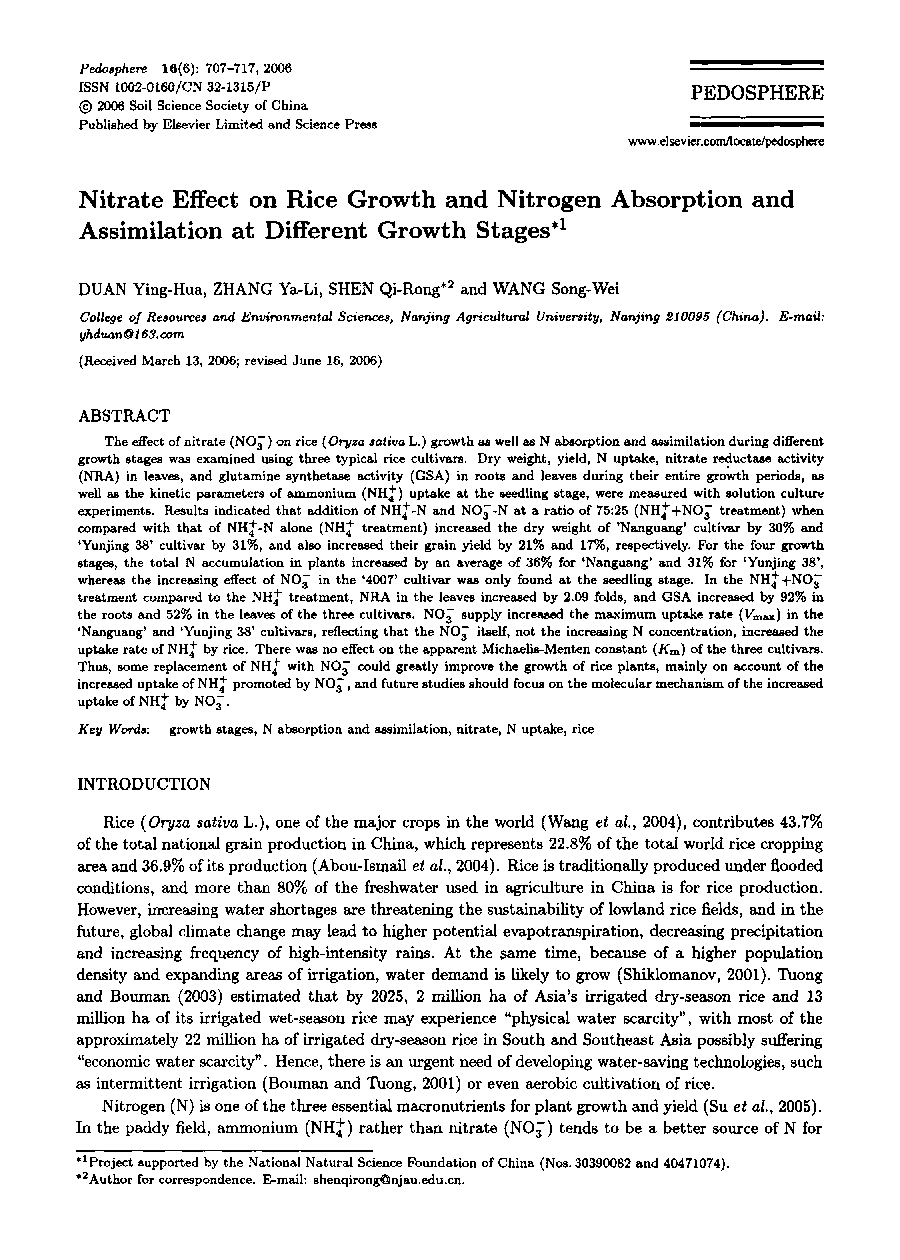| Article ID | Journal | Published Year | Pages | File Type |
|---|---|---|---|---|
| 4582221 | Pedosphere | 2006 | 11 Pages |
ABSTRACTThe effect of nitrate (NO−3) on rice (Oryza sativa L.) growth as well as N absorption and assimilation during different growth stages was examined using three typical rice cultivars. Dry weight, yield, N uptake, nitrate reductase activity (NRA) in leaves, and glutamine synthetase activity (GSA) in roots and leaves during their entire growth periods, as well as the kinetic parameters of ammonium (NH+4) uptake at the seedling stage, were measured with solution culture experiments. Results indicated that addition of NH+4-N and NO−3-N at a ratio of 75:25 (NH+4+NO−3 treatment) when compared with that of NH+4-N alone (NH+4 treatment) increased the dry weight of ‘Nanguang’ cultivar by 30% and ‘Yunjing 38’ cultivar by 31%, and also increased their grain yield by 21% and 17%, respectively. For the four growth stages, the total N accumulation in plants increased by an average of 36% for ‘Nanguang’ and 31% for ‘Yunjing 38’, whereas the increasing effect of NO−3 in the ‘4007’ cultivar was only found at the seedling stage. In the NH+4+NO−3 treatment compared to the NH+4 treatment, NRA in the leaves increased by 2.09 folds, and GSA increased by 92% in the roots and 52% in the leaves of the three cultivars. NO−3 supply increased the maximum uptake rate (Vmax) in the ‘Nanguang’ and ‘Yunjing 38’ cultivars, reflecting that the NO−3 itself, not the increasing N concentration, increased the uptake rate of NH+4 by rice. There was no effect on the apparent Michaelis-Menten constant (Km) of the three cultivars. Thus, some replacement of NH+4 with NO−3 could greatly improve the growth of rice plants, mainly on account of the increased uptake of NH+4 promoted by NO−3, and future studies should focus on the molecular mechanism of the increased uptake of NH+4 by NO−3.
